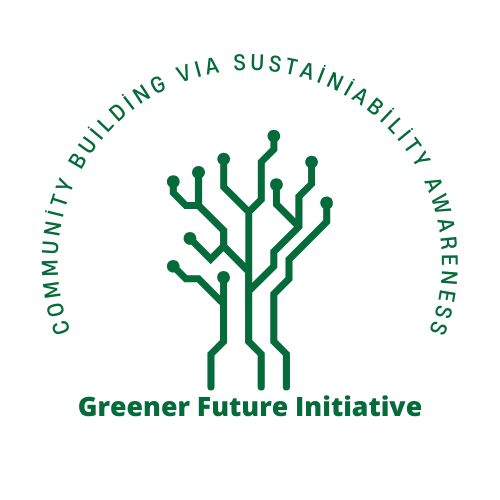Water is essential to life. It is the most precious resource on the planet. Without it, no living organism would survive. Unfortunately, water scarcity is becoming an ever-growing issue worldwide. Global water consumption is skyrocketing, while freshwater supplies are depleting faster than we can replenish them. The result? Millions of people are left without access to clean water, and ecosystems are suffering.
In this article, we’ll explore the causes of water scarcity, the importance of smarter water management, and innovative solutions like water recycling, desalination, and smart water usage technologies.
What is Water Scarcity?
Water scarcity occurs when the demand for water exceeds the available supply. This can happen for various reasons, including over-extraction, pollution, climate change, and population growth. As a result, many regions face droughts, reduced access to clean drinking water, and poor sanitation conditions.
There are two types of water scarcity: physical and economic. Physical water scarcity happens when natural water resources are insufficient to meet demand. Economic water scarcity occurs when a region has enough water, but the infrastructure or financial resources to access and distribute it are lacking.
The Global Impact of Water Scarcity
Water scarcity is a global crisis that affects millions of people. According to the United Nations, over 2 billion people live in countries experiencing high water stress. This includes regions in Africa, the Middle East, South Asia, and even parts of the United States. In these areas, water shortages can lead to serious consequences, including:
- Health Issues: Lack of clean water can lead to the spread of waterborne diseases like cholera, dysentery, and typhoid fever. Contaminated water is one of the leading causes of death in developing countries.
- Agricultural Struggles: Water is essential for irrigation. Without sufficient water, crops fail, and food security is threatened. In regions dependent on agriculture for their livelihoods, water scarcity can lead to poverty and social instability.
- Economic Impact: Industries that rely on large quantities of water, such as manufacturing and energy production, can suffer when water resources are limited. This can result in job losses and reduced economic growth.
- Ecosystem Damage: Rivers, lakes, and wetlands are vital ecosystems that rely on healthy water supplies. When water is over-extracted, these ecosystems suffer, leading to biodiversity loss.
The Causes of Water Scarcity
Understanding the root causes of water scarcity is essential to finding effective solutions. Here are some of the major factors contributing to the global water crisis:
1. Climate Change
Climate change is altering weather patterns worldwide, causing more frequent and severe droughts in some areas and heavy rainfall in others. These unpredictable weather events make it harder to manage water resources effectively. Regions that once had reliable water supplies are now experiencing prolonged dry spells, while others face flooding that disrupts local water systems.
2. Overpopulation
The world’s population is growing rapidly, putting immense pressure on freshwater resources. As cities expand and rural areas develop, the demand for water increases. The population is expected to reach 9.7 billion by 2050, which will only make the situation worse if water management practices do not improve.
3. Water Pollution
Pollution from industrial waste, agricultural runoff, and untreated sewage is a significant problem in many parts of the world. Contaminants like pesticides, heavy metals, and chemicals can make water sources unsafe for consumption. In some cases, polluted water is too toxic to treat, leaving entire communities without access to clean water.
4. Wasteful Water Use
In many parts of the world, water is used inefficiently. People often take water for granted, wasting it on unnecessary activities. Agriculture, in particular, is a major contributor to water wastage, as large quantities of water are used to irrigate crops, even in arid regions.
Innovative Solutions to Water Scarcity
The good news is that there are many innovative solutions that can help combat water scarcity. Through smarter water management practices, we can make better use of existing water resources and even create new ones. Here are some of the most promising solutions:
1. Water Recycling and Reuse
One of the most effective ways to address water scarcity is by recycling and reusing water. In many parts of the world, water is used once and then discarded, which is highly inefficient. Water recycling involves treating wastewater so that it can be used again for non-potable purposes such as irrigation, industrial processes, and even flushing toilets. In some cases, it can even be purified to the point where it is safe for drinking.
Recycling water reduces the demand for freshwater and lowers the cost of water treatment. Cities like Singapore and Israel have implemented successful water recycling programs, which have helped to ensure a steady water supply despite limited freshwater resources.
2. Desalination: Turning Saltwater into Freshwater
Desalination is the process of removing salt from seawater to make it suitable for drinking and irrigation. With more than 70% of the Earth’s surface covered in water, desalination has the potential to provide a nearly unlimited source of freshwater.
However, desalination requires a lot of energy and can be expensive. It also produces brine, which can be harmful to marine ecosystems if not properly disposed of. Despite these challenges, desalination is becoming a viable solution in water-scarce regions like the Middle East and parts of California, where freshwater resources are limited, but seawater is abundant.
3. Smart Water Usage Technologies
Advancements in technology are helping to improve water management in a variety of ways. Smart water meters and sensors can track water usage in real-time, allowing households and businesses to monitor their consumption and detect leaks early. This helps reduce waste and lower water bills.
In agriculture, precision irrigation systems use data from weather forecasts, soil sensors, and satellite imagery to optimize water usage. By applying just the right amount of water to crops when needed, farmers can conserve water and improve yields.
In cities, smart infrastructure like water distribution networks can help detect and prevent leaks before they become major issues. These technologies can reduce the strain on water systems, improve efficiency, and lower costs.
4. Rainwater Harvesting
Rainwater harvesting is the practice of collecting and storing rainwater for future use. This is particularly useful in regions that experience seasonal rainfall but are dry for much of the year. By capturing rainwater in tanks or reservoirs, communities can reduce their reliance on external water sources and have a more reliable supply during dry periods.
Many countries, including India and Australia, have implemented rainwater harvesting systems to supplement their water needs. The collected water can be used for irrigation, cleaning, and even drinking after proper treatment.
5. Water-Saving Appliances
The development of water-efficient appliances is another key solution to water scarcity. Modern dishwashers, washing machines, and toilets are designed to use less water without compromising performance. By using water-efficient products in homes and businesses, we can significantly reduce overall water consumption.
6. Sustainable Agriculture Practices
Agriculture is one of the largest consumers of water, and much of it is used inefficiently. Implementing sustainable farming practices such as crop rotation, soil conservation, and efficient irrigation systems can reduce water usage in agriculture. By using less water to grow more food, we can alleviate pressure on freshwater resources and improve food security.
The Importance of Smarter Water Management
Smarter water management is key to solving the global water crisis. By adopting more efficient water use practices, investing in innovative technologies, and changing how we think about water, we can ensure a more sustainable future. Governments, businesses, and individuals all have a role to play in reducing water waste and protecting this vital resource.
Water scarcity is a challenge, but it is not insurmountable. With a combination of innovative solutions, responsible consumption, and strategic planning, we can create a world where everyone has access to clean, safe water for generations to come.
Conclusion
Water scarcity is one of the most pressing issues of our time, but it’s not too late to take action. Through water recycling, desalination, smart water technologies, and sustainable water management practices, we can address the challenges posed by water scarcity. The future of water security depends on our ability to adapt and innovate. It’s time to rethink how we use water and embrace smarter solutions that benefit both people and the planet.

